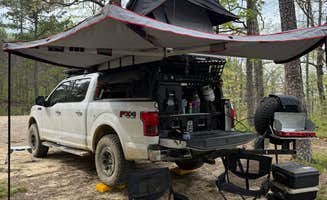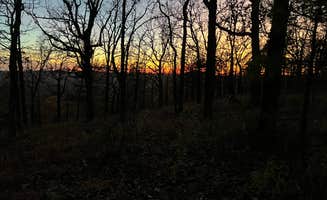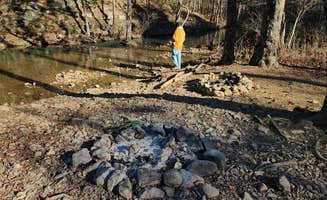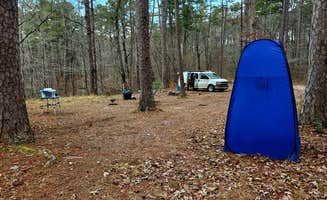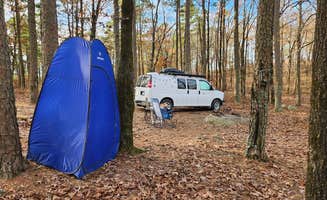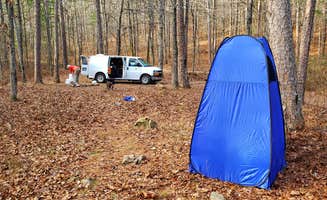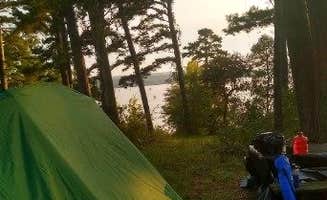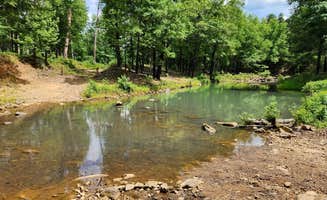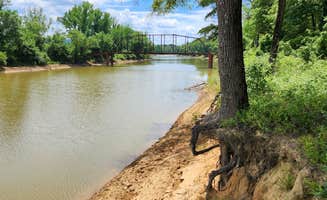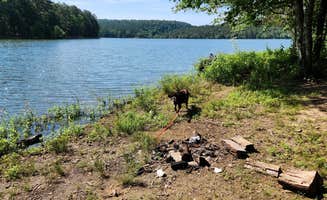Dispersed camping options in the Ouachita National Forest provide free camping near Hot Springs Village, Arkansas with varied terrain and elevations between 500-2,600 feet. The forest contains over 1.8 million acres with numerous unmarked camping spots along forest service roads. Winter temperatures typically range from 30-50°F while summer months can reach 85-95°F with high humidity.
What to do
Hiking the Ouachita Trail: Access the Ouachita National Recreation Trail from FR132-Grindstone Rd Dispersed campsite. "The Flatside Wilderness Area is accross FR132 from this dispersed site; easy access to the Ouachita Trail," notes Fred S. The trail offers multiple access points from dispersed sites.
Visit mountain overlooks: The Base of North Fork Pinnacle Dispersed site provides convenient hiking access. "The North Fork Pinnacle viewpoint is a half-mile hike from the campsite," reports Fred S. This location serves both hikers and those driving forest roads.
Waterfront relaxation: Harris Brake Lake offers no-cost waterfront camping with fishing access. Camper Julian P. shares, "absolutely beautiful place the fireflies here are amazing! Nobody else was camping here which made for some quiet nights. The locals fish and swim in the lake so light traffic."
What campers like
Private forest settings: Many campers appreciate the seclusion at Forest Service RD 153. Logan R. describes one site as having "amazing 360 sunsets and sunrises" and notes the "extremely rare traffic so minimal reminders of society."
Level camping spots: Some sites offer more comfortable terrain than others. At Forest Service RD 132, Jared E. found "a fire pit, prepared firewood, and a nice stump to chop more on. Very isolated, didn't see any cars past 7 pm. Ample room for large van and many tents."
Wildlife viewing: The quiet forest environment supports diverse wildlife. At Harris Brake Lake, campers report seeing fireflies in large numbers during summer months. The forested settings around most sites provide habitat for deer, foxes, and various bird species.
What you should know
Road conditions vary significantly: Forest Service roads can deteriorate rapidly after rain. At FR132 Crossroads Site Dispersed, Alice S. warns: "Stay on the good gravel roads. GPS took me down 4 miles of an old log trail that I wasn't able to turn around on. Spent thirty minutes cursing GPS and contemplating my life choices."
Cell service is inconsistent: Coverage varies dramatically between carriers and locations. Fred S. reports "spotty T-Mobile service, but good AT&T service" at the Base of North Fork Pinnacle site, while at FR132-Grindstone Rd he experienced only "sporadic T-Mobile cell service."
Hunting season awareness: During hunting seasons (typically fall and early winter), expect increased traffic and activity. Camper Arthur S. noted at Brown Creek Cascade: "Sunday morning there were hunters out, so hearing gunshot pretty close to camp."
Tips for camping with families
Find sites with level ground: For comfortable tent camping with children, seek less rocky terrain. At Brown Creek Cascade Dispersed Campsite, Arthur S. found a "good flat spot for my tent, which is a four person" and mentioned the site was suitable for family use.
Plan for water needs: No drinking water exists at these sites. Pack 1-2 gallons per person per day. Fred S. notes at Brown Creek Cascade: "No water (except for creek)" and reminds campers about the need to "take out what you bring in."
Consider site size for group camping: Some locations accommodate multiple tents. At FR132 Grindstone Mountain Area, Fred S. describes it as a "large site; good for groups. Should accommodate 4 rigs - truck campersize & smaller."
Tips from RVers
Vehicle clearance requirements: Many forest roads require appropriate vehicles. Jacob F. observed that you "need 4×4 some washouts on forest service rd 153" to access certain camping areas. Non-high clearance vehicles may scrape at entry points to some sites.
Leveling challenges: RVers should bring leveling blocks. Fred S. notes that at the FR132-Grindstone Rd site, "The site is not quite level; some leveling may be required." Similarly, at Forest Service RD 132, Jacob F. advises: "If you are in a rooftop there are plenty of rocks to level up on."
Site sizing limits: Most dispersed sites accommodate smaller rigs only. At FR132 Grindstone Mountain Area Dispersed, the site "should accommodate 4 rigs - truck campersize & smaller" according to Fred S., making it one of the more spacious options for no-cost camping near Hot Springs Village.


